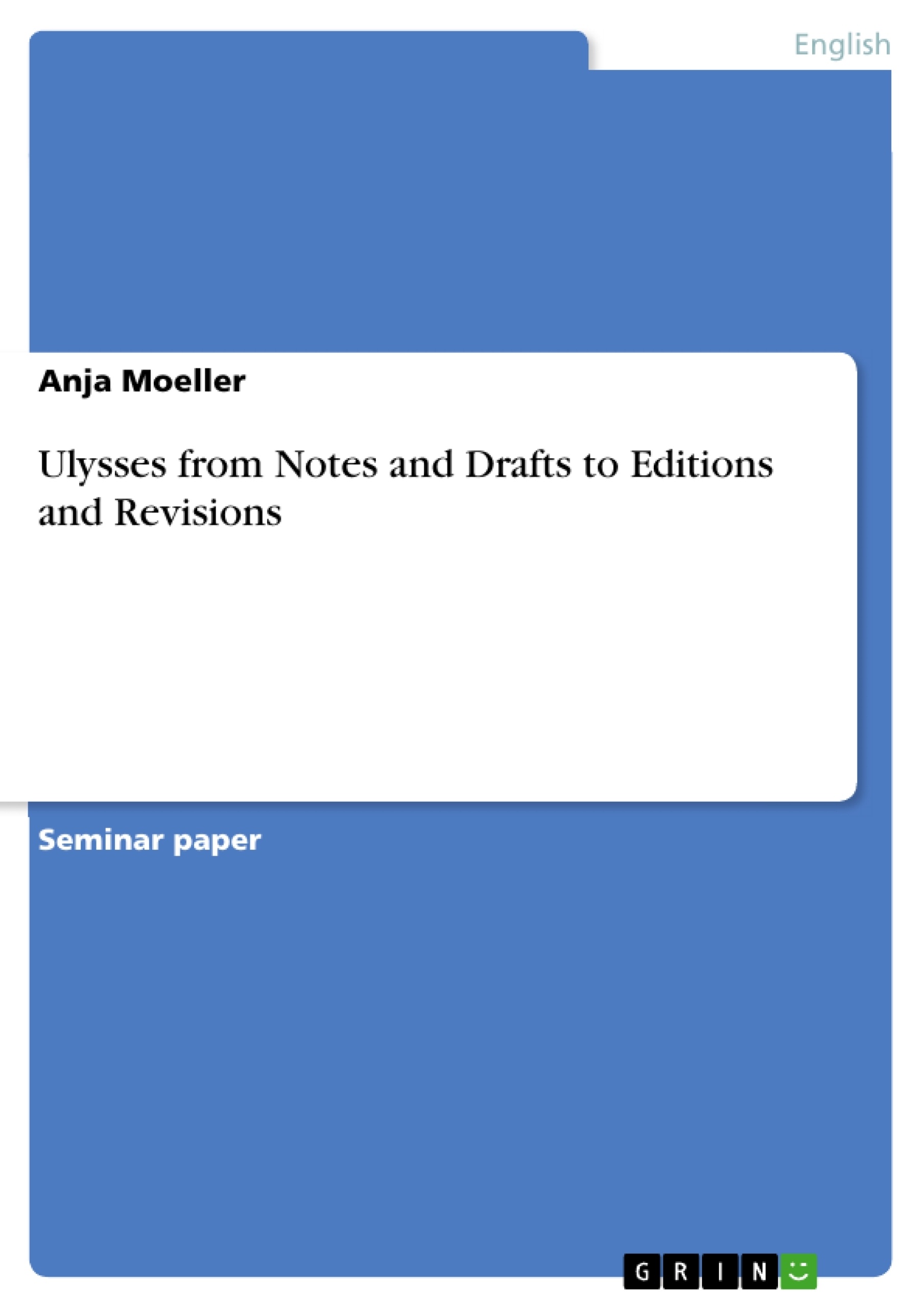James Joyce′s idea was to add a short story to Dubliners, named Ulysses, he never wrote it. But he kept the idea and wrote a novel instead, which took him seven years. In the early stages of planning the work was imagined to extend to 22 episodes, than reduced to 17 episodes, in the end 18 episodes were realised. On 29th October 1921 he declared the text to be finished, but he continued to correct and revise it until the end of January 1922, only short time before publication on 2nd February 1922, James Joyce′s fortieth birthday.
Because it took him such a long time, it is doubtful if the final text is the one Joyce planed to write or had he just been stopped in his process by the deadline of his publisher. Supposing that was the case is there the possibility to find out what he wanted to achieve and how could that be made.
In a first step I want to point out Joyce′s process of writing and proceeding, his habit of taking notes and working with them. This will lead to the different serialisations respectively editions and the project Hans Walter Gabler undertook to edit the "Corrected Ulysses" including the occurring problems and what other Joyceans thought and still think about it.
Inhaltsverzeichnis (Table of Contents)
- Introduction
- The first steps towards Ulysses
- Notes
- Notebooks
- Drafts
- Fair Copy
- Manuscripts
- Typescripts
- The different editions and serialisation
- The first publication of episodes
- Proofreading
- The first book edition
- A new attempt
- An overview of Hans Walter Gabler's work
- The continuous manuscript
- The synoptic and the reading text
- The critic against Gabler's work
- Kidd's criticism on Gabler
- Kidd's influence on publication
- What do others think about Gabler
- Conclusion
Zielsetzung und Themenschwerpunkte (Objectives and Key Themes)
This paper aims to provide an in-depth analysis of James Joyce's process of writing Ulysses, examining his working methods, the evolution of the text from notes to drafts, and the various editions and serialisations. It also explores the challenges of editing the work and the critical response to Hans Walter Gabler's edition.
- Joyce's method of note-taking and drafting
- The development of Ulysses from initial ideas to final manuscript
- The different editions and serialisations of the work
- The significance of Gabler's edited version
- The critical debate surrounding the editing of Ulysses
Zusammenfassung der Kapitel (Chapter Summaries)
- Introduction: Provides a brief overview of the genesis of Ulysses, highlighting its long gestation period and the revisions that Joyce undertook during its creation.
- The first steps towards Ulysses: Explores Joyce's process of writing, focusing on his method of note-taking, the different types of drafts, and the evolution of the manuscript. This section examines the notebooks and note sheets used by Joyce in the early stages of writing.
- The different editions and serialisation: Discusses the various stages of publication, including the initial serialisation of episodes, the proofreading process, and the first book edition.
- A new attempt: Analyses Hans Walter Gabler's project to edit a "Corrected Ulysses," outlining the methodology and the challenges he faced.
- The critic against Gabler's work: Examines the criticism leveled against Gabler's edition, particularly the work of Kidd, and the influence of this criticism on subsequent publications.
Schlüsselwörter (Keywords)
The main keywords and focus topics of this work include James Joyce, Ulysses, note-taking, drafting, editions, serialisation, Hans Walter Gabler, critical reception, editing, and literary criticism.
- Quote paper
- Anja Moeller (Author), 2002, Ulysses from Notes and Drafts to Editions and Revisions, Munich, GRIN Verlag, https://www.grin.com/document/9422



